Out of all the flowers that one can mention and the kinds of scents that one can imagine, Jasmine and Gardenia are among the most magical. These plants are long-standing and used in gardens, grants, and religious and civil ceremonies.
The smell of Jasmine in the summer night has filled poets and artists’ spirits for centuries; Gardenia – the pure and innocent white color of the flowers is the simplicity of refined romance. With the help of this article, I aimed to explain the features of resemblance and divergence between Jasmine vs. Gardenia, two of the most popular decorative flowers in horticulture.
Comparing Jasmine Vs Gardenia
It is significant for gardeners, landscapers, and any enthusiast of flowers and plants to have proper knowledge of the nature of Jasmine and Gardenia. While both are widely known to be ornamental and aromatic plants, their growth, appearance, and cultural uses differ. Like Jasmine vs Gardenia, there’s one more comparison Jasmine vs Honeysuckle this all-encompassing comparative intends to help readers make beneficial decisions for their gardens or individual plant groups per each plant’s need and appeal.
| Flower | Kingdom | Order | Family | Genus |
| Jasmine | Plantae | Lamiales | Oleaceae | Jasminum |
| Gardenia | Plantae | Gentianales | Rubiaceae | Gardenia |
Jasmine
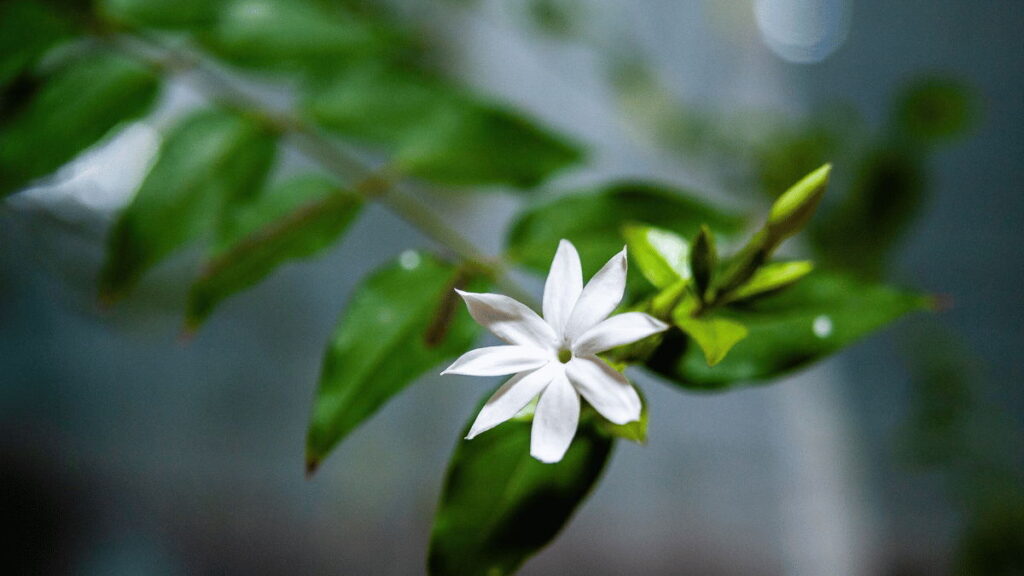
Jasmine is found in the tropical and subtropical regions of Eurasia, Australasia, and Oceania. This plant originated in early Persia and India, and its aromatic properties were used for ceremonies of ancient civilizations. In India, it is used in many auspicious ceremonies and is popularly known as Chameli Flower. Jasmine arrived in Europe only in the 16th century, but from there, it gained popularity and is now used mainly for ornamental purposes. For years, many cultures worldwide have used its flowers to symbolize purity and love.
Flowers and Leaves
Jasmine flowers are relatively small and can be white or yellow. Usually, the flowers are
star-shaped and often come in clusters. Commonly, they are pinnate, and the leaves are shiny and dark green, which is an excellent contrast to the delicate flowers.
Growth Habits
Jasmine is a trailing or twining plant, and it is reported that some types of Jasmine grow up to a height of 350-450 cm. This plant does well in soils with good drainage and can be explained to grow on a trellis, arbor, or ground cover.
Gardenia
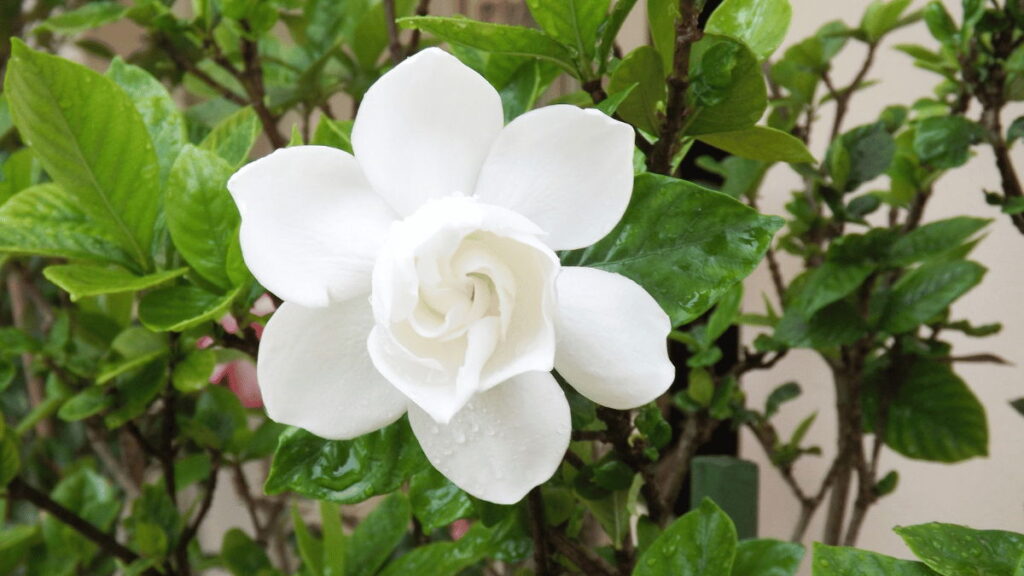
Gardenia is a plant species of the tropic and subtropics of Africa, Asia, Madagascar, and some Pacific islands. It was named after Dr. Alexander Garden, an eminent Scottish-born American naturalist. As per Wikipedia plants of the world online discovered 128 species in the gardenia genus. Gardenias have been used in traditional Chinese medicine for thousands of years and were widely grown for their scent and aesthetic value by the 18th century. They were introduced to Europe and America; their usage was connected with elegance: they were worn in Bridal bouquets and corsages.
Flowers and Leaves
Gardenia is a flower that blooms rather large, is white and glossy in texture, and contains a lovely scent. The leaves are large, dark green, and smooth, which gives the plant a stunning appearance next to the flowers.
Growth Habits
Gardenias are shrubs of the herbaceous type and could grow up to 3-6 feet high and as wide. They grow optimally in acidic soil and can be planted as single specimens, in a hedge, a pot, or borders.
| Flower | Flower Color | Flower Shape | Leaf Structure | Growth Habit | Average Height |
| Jasmine | White, Yellow | Star-shaped, small in size, and fragrant. | It has pinnate foliage, and it is dark green and glossy. | Climbing/Shrub | 10-15 feet (3-4. 5 meters) |
| Gardenia | Creamy white | Large and waxy or rose-like | In shape, it has broad, shiny, and dark green foliage. | Shrub | 3-6 feet (1-2 meters) |
Jasmine Vs Gardenia Varieties & Species
White Jasmine
This species has an exceedingly strong scent and white flowers and is commonly grown for landscaping.
Arabian Jasmine
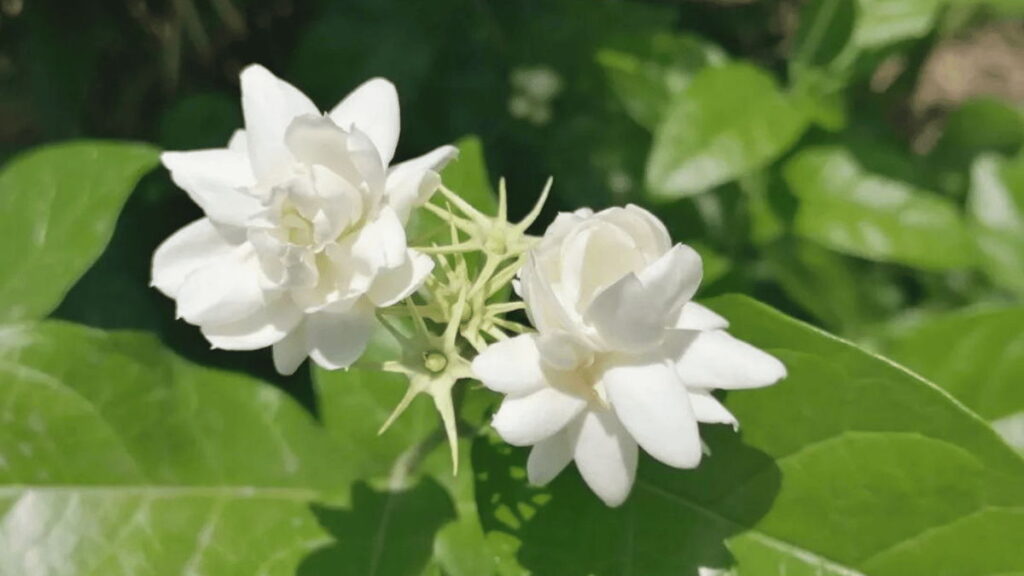
Highly fragrant white flowers are commonly used to make tea and perfume.
Pink Jasmine
It has lively green leaves; and a pink bud that resembles a mini rose to bloom with white flowers, used as an indoor plant.
Gardenia jasminoides (Cape Jasmine)
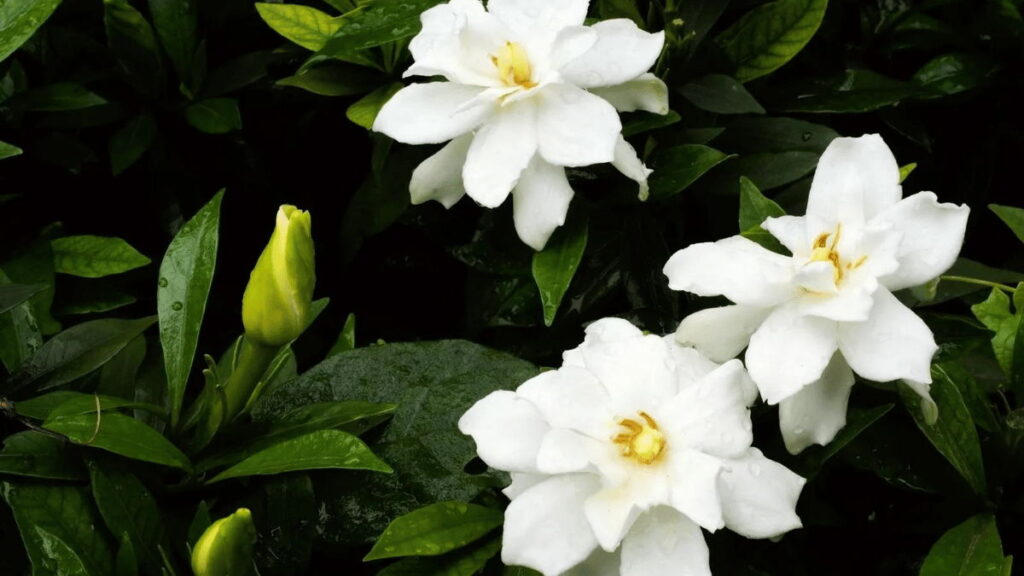
This is the favorite gardenia species grown in gardens due to its beautiful flowers and foliage emitting excellent fragrance.
Is Cape Jasmine the same as Gardenia?
Yes, Cape Jasmine is one of the names for Gardenia, the scientific name for which is Gardenia jasminoides. They are the same plant, specifically with fragrant white flowers with dark green leaves.
Is Cape Jasmine poisonous?
If ingested, Cape Jasmine (Gardenia jasminoides) is toxic to pets and humans but is mildly poisonous. Gastrointestinal disturbances are some effects, including nausea, vomiting, and diarrhea.
White Gardenia
Large, well-formed tubular flowers, natives of South Africa.
Creeping Gardenia
A ground cover type with small, sweet-smelling flowers.
Arabian Jasmine vs Gardenia
| Arabian Jasmine | Gardenia |
| This prized tiny white flower is highly fragrant and often used to make jasmine tea or perfumes. It produces a sweet fragrance and blooms all the year round, especially in the tropical regions. | Produces slightly larger pure white flowers and has a more prosperous, sweeter, and less distinct scent than ‘Superb’. Gardenias are fondly grown in gardens for their decorative purpose, and generally, they are of seasonal flowering type. |
Jasmine and Gardenia Care Tips
Jasmine
Soil
Sun, well-drained, and slightly fertile soil is the dream environment for alliums.
Sunlight
Flowers are best grown in full sun to part-shade positions.
Water
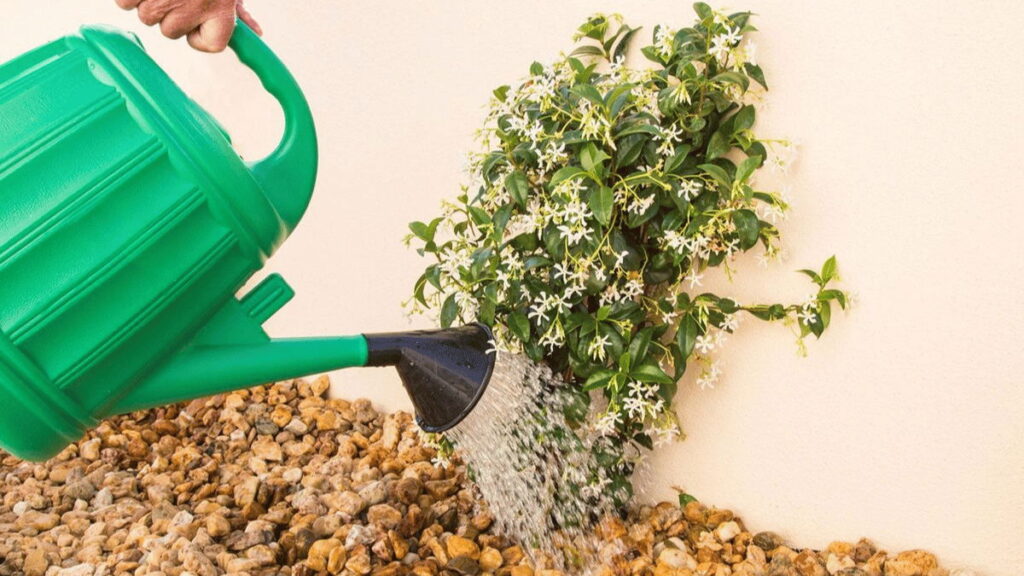
Moderately frequent; it is preferred that the soil is not too wet, but it should not be allowed to dry out too much.
Pests
Aphids, the spider mite, and the whitefly.
Fertilizer
Just like any plant fertilizing jasmine at the right time is very important for growing greener and lush foliage, you have to use a balanced slow-releasing organic fertilizer like rotted manure or eggshell fertilizer.
Diseases
The most common diseases affecting this plant include root rot, leaf spot, and powdery mildew.
Pruning and Maintenance Tips
Trim after flowering to control the plant’s shape and promote growth.
Prune the trees to eliminate the branches that have died or are infected to avoid spreading the diseases.
Gardenia
Soil
Acid soil condition, good drainage facilities with organic matter.
Light
They require full sun to semi-shade areas to grow best and effectively cover all the space the plant needs.
Water
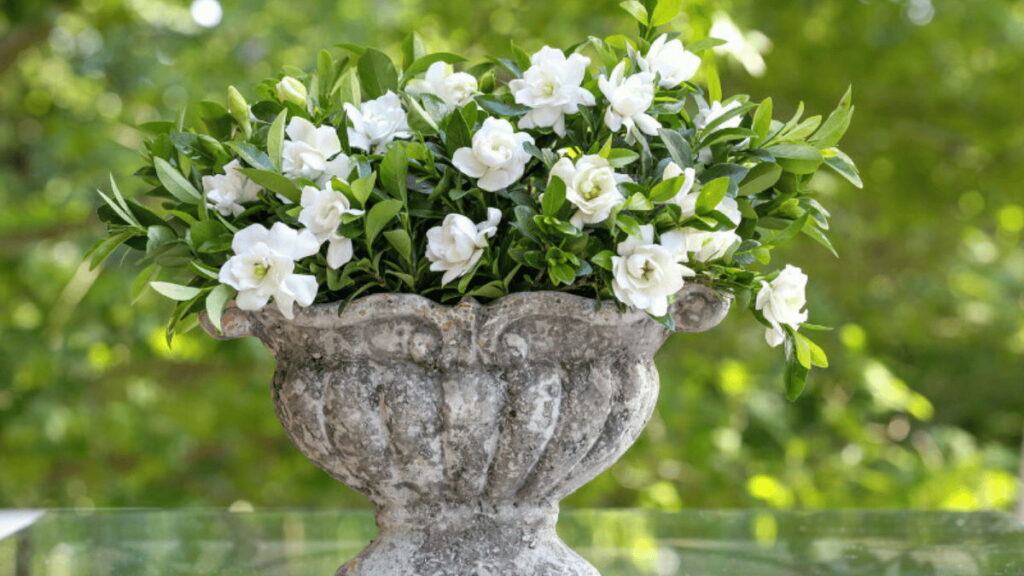
Moderate humidity, but not let the plants stand in water.
Pests
Mealybugs, Chydids, coccids, Aphididae, and scale insects.
Diseases
Chlorosis, powdery mildew, and sooty mold.
Pruning and Maintenance Tips
- Trim only after flowering since other times may hinder the plant’s growth.
- Ready-made plants should also be pruned while dead branches are removed.
- Maintaining the soil moisture and the required acidity also requires mulch.
Gardenia Vs Jasmine Smell
Jasmine Fragrance
Jasmine has a delightful, oriental, rich aroma that can even be characterized, for instance, as a rather provocative one. It has the highest level of fragrance at night and thus has a unique attraction towards different night pollinators.
Attracting Pollinators
Flowers on Jasmine emit fragrances that draw bees, butterflies, and moths, which are essential for the flower’s Pollination. The smell is used to facilitate Pollination, which produces flowers in the plant.
Gardenia Fragrance
Gardenia is classified as an olfactory and thus possesses a strong, floral scent with a creamy overtone, reminding of the smell of fresh flowers or a sweet, milky odor. The fragrance is rather pleasant, and even a single blossom possesses its powerful aroma.
Attracting Pollinators
Gardenias are beautiful, attracting bees and other insects due to the smell and color of the flowers. It has a sweet smell produced in the evening and attracts insects involved in Pollination.
| Flower | Fragrance Type | Potency | Pollinators |
| Jasmine | Sweet, exotic, intense | Very contacted, and more so at night. | Bees, butterflies, moths |
| Gardenia | Rich, floral, creamy | Strong, noticeable | Bees, various insects |
Jasmine Uses
Uses in Perfumery, Cuisine, and Medicine
Perfumery: Jasmine scent is unique and one of the most widely used scents in producing perfumes. Flowers are used in the production of Jasmine, which is used in most luxurious perfumes today. It is significantly associated with feelings of romance and calmness among the population.
Cuisine: The leaves are used to produce tea, particularly in China and Southeast Asia, and the flower adds flavor to teas. Jasmine rice is grown mainly in Thailand and is a
long-grain rice with a jasmine-like smell.
Medicine: Jasmine contains chemicals utilized to solve problems ranging from anxiety to impotence in traditional medicine. According to cultural beliefs, it suppresses stress levels, enhances moods, and encourages sleep. Some of the uses of jasmine oil include being used in aromatherapy to calm the nerves.
Gardenia Uses
Uses in Perfumery, Cuisine, and Medicine
Perfumery: Notable for its sweet smell, Gardenia’s aroma is flowery and rich, making it popular in perfume production. It plays a role in producing perfumes depicting the nature of elegance and prestige in life.
Cuisine: However, although they are not frequently used in cooking, such as Jasmine, gardenia flowers are used to prepare teas and garnish desserts. Traditionally, Gardenia seeds are employed in some parts of Asia to give the food some color.
Medicine: This plant has been used in herbal medicine, mainly to counter inflammation, and was also found to possess antimicrobial activity. Their uses include curing infections, drawing out fevers, and lessening anxiety. Natural compounds produced in the plant are also investigated for their health-promoting properties.
Landscape and Garden Design
Jasmine Vs Gardenia are loved for their fragrance, beautiful flowers, and unique qualities that are suitable for landscaping and gardening. In this segment, we will discuss the application of these plants in gardens and landscapes, their companionship with other plants, and the ornamental significance of the various sites.
Jasmine Uses in Landscape Design
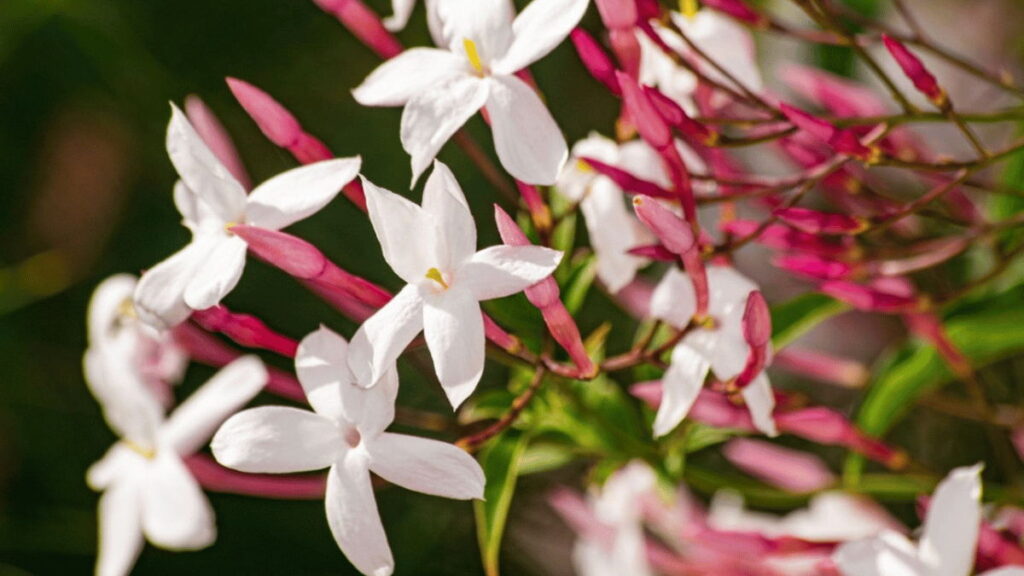
Jasmine is a very liberal plant that can be planted in different gardens and lawns, ranging from highly structured to ordinary backyards. This tree is versatile, and its flowers can be a beauty boost for the garden or compound where it grows.
Gardenia Uses in Landscape Design
Gardenias are popular due to their beautiful flowers and elegant foliage; they are used frequently in most gardens. They significantly beautify the garden outlook due to their elegance and fragrance.
| Flower | Landscape Use | Growth Forms | Colour Schemes | Pairing Plants | Fragrance | Design Versatility | Container Planting |
| Jasmine | The primary use of prune is in climbers, ground cover and hedges, container plants, and vertical gardens. | Climbing, trailing, shrub-like. | Small white, yellow, and pink flowers and green leaves. | Lavender, hydrangea, rose, hibiscus, bougainvillea. | Sensual, mystic scent for an evening set-up. | Presumably suitable for formal and informal buildings, it creates vertical interest. | Suitable for use in patios, balconies, and in small gardening. |
| Gardenia | Additional or specialty and ornamental plants- shrubs, lawn edges, boundary plants, and pot plants- are also available. | Shrubby, compact forms, spreading. | White and cream small flowers with dark green leaves. | Ferns, hostas, azalea, rhododendron, camellias. | The luxurious and smooth aroma describes the richness as well as the sophistication of the product. | Suitable for formal hedges and exterior or interior walls, it provides rigidity. | It is ideally suited to the areas such as patios, terraces, and gates. |
Conclusion
Jasmine Vs. Gardenia are adored for their aesthetic value, aroma, and symbolism, which give various values to gardeners and lovers. Jasmine is suitable for producing excellent fragrances and is oriented to creating romantic gardens as the plant can climb and spread along the ground. Gardenia provides an air of sophistication with its beautiful flowers and velvet-like foliage.
This is especially so when deciding between planting Jasmine and Gardenia, where the decision will largely depend on elements such as garden design, scent, and cultural associations. Both plants have their characteristics and can improve any territory in the garden.
It would be perfect to have your feedback about it! Have you ever cultivated jasmine or gardenia plants in your garden? Have any of you had a chance to take care of these beautiful plants? What are the most helpful tips? Please post your stories, questions, or comments in the comments section below.
Is Gardenia and Jasmine fragrance the same?
No, the fragrance of Gardenia is different from that of Jasmine. Therefore, gardenias are said to have a rich, sweet, and creamy fragrance, while Jasmine is said to have a gentle, floral, sweet, and exotic aroma. It is possible to note the difference in the spiciness of the flavor, although both are very intense.
Which Gardenia plant has the best smell?
Gardenia jasminoides ‘Veitchii,’ or Everblooming Gardenia, is deemed the best-smelling gardenia variety. It has a powerful, sweet, appealing smell and is famous for lasting long and remaining in bloom for an extended period.

